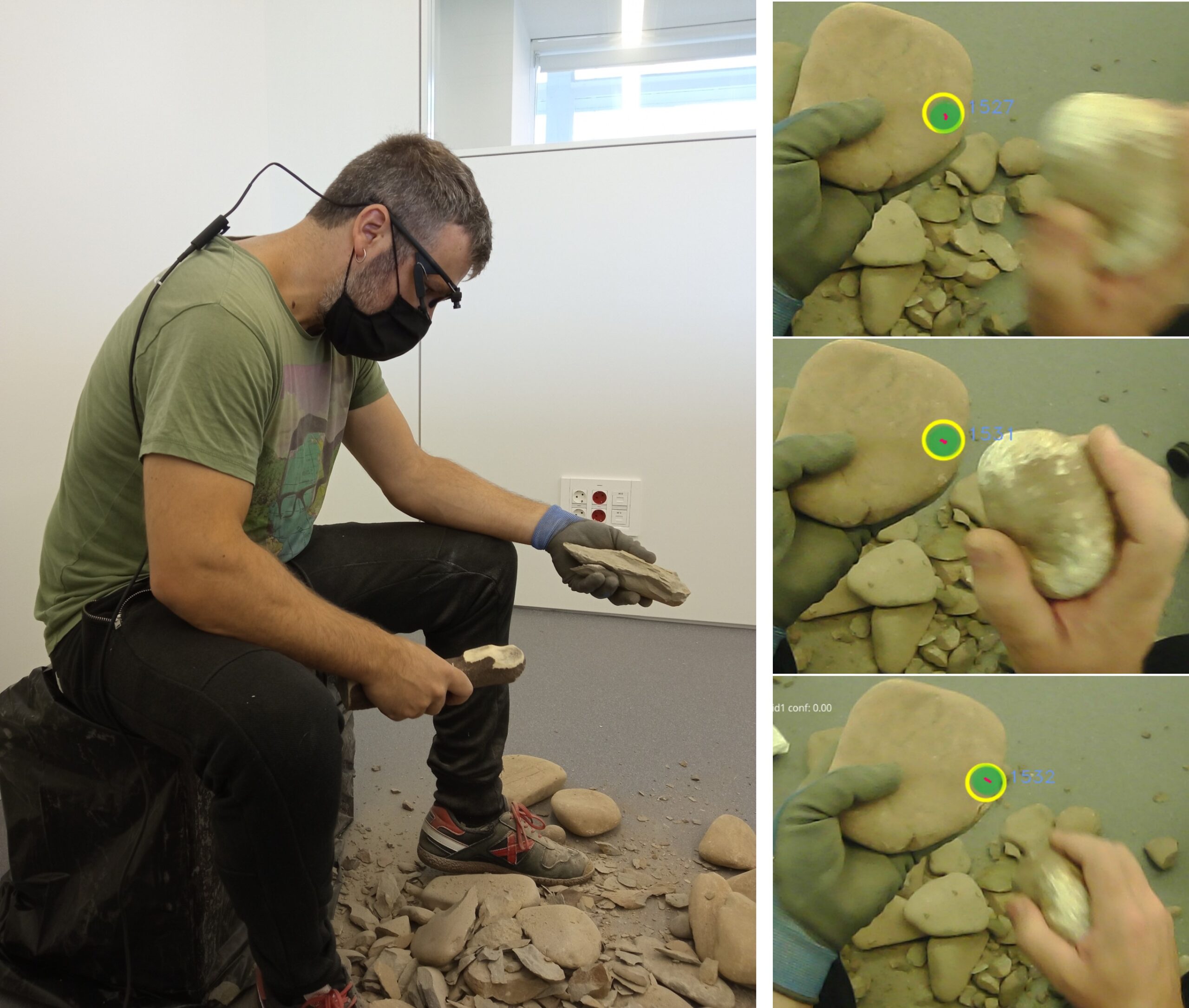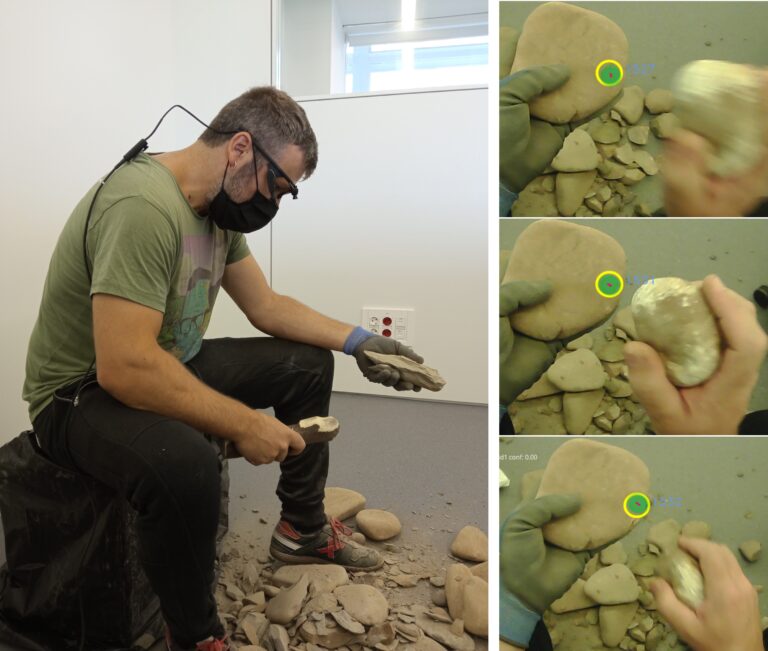Visual behavior during the manufacture of stone tools is analyzed for the first time

The Paleoneurology Group at the Centro Nacional de Investigación sobre la Evolución Humana (CENIEH) has just published a new study in the Journal of Paleolithic Archaeology which, for the first time, analyzes visual behavior during the manufacture of Lower Paleolithic stone tools. The results show that the visual behavior depends on the tool being made.
In this experimental study, a knapper wore eye tracking goggles to record the direction of the gaze during the entire process of making Paleolithic tools: choppers and handaxes. Eye tracking is the technique that records the direction of the gaze and makes it possible to quantify the visual attention directed at a scene. This methodology has established itself as an effective approach to investigating the visuospatial system and tackling human cognition from an evolutionary perspective.
In the case of choppers, or worked pebbles, the attention is distributed very irregularly as it does not follow any clear pattern in the utensils made. Nevertheless, when knapping handaxes, the gaze presents a more uniform behavior which is similar in all the pieces studied.
Despite these differences, common features were also found in the two technological elements, such as the attention directed at the position of the next impact. In other words, when a blow is being given, the target for the next one is already being observed. This pattern is common to all cognitively demanding tasks which require integration of visual and manual information.
“This behavior relates to planning and predicting the movements to be made, and is also seen in other activities requiring a strong level of visuospatial coordination, like playing the piano, or even pingpong”, says the lead author, María Silva Gago.
This is the fifth paper in a series from the Paleoneurology Group, coordinated by Emiliano Bruner, on the analysis of visual perception and Lower Paleolithic stone tools, and the collaborating institutions on this occasion were the Universidad Isabel I de Castilla and the University of Lincoln (United Kingdom).



